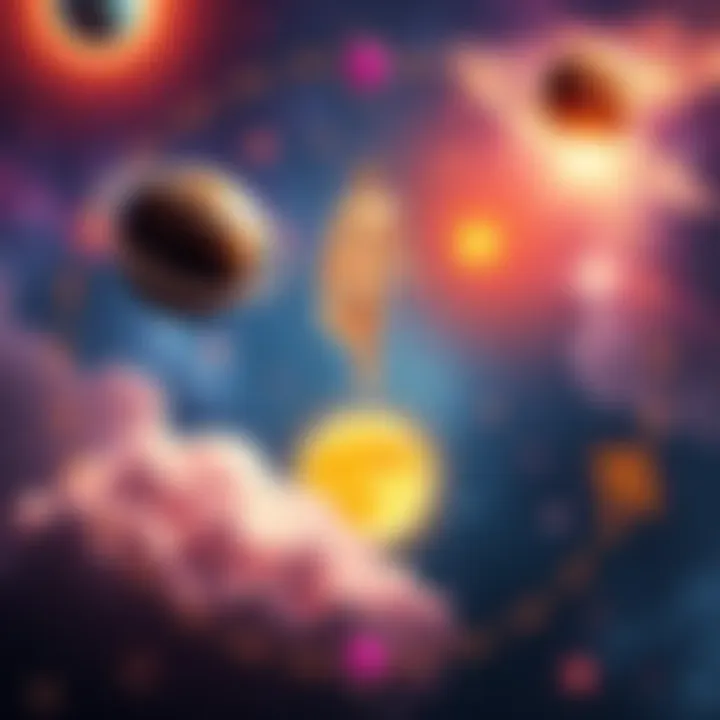Feminine Energies in Astrology | Overlooked Insights Spark Controversy
Edited By
Ethan Blake

A rising debate among astrology enthusiasts highlights the overlooked feminine aspects of Rahu, Ketu, and Mercury. Many argue that these energies often get mischaracterized, leading to misconceptions about their true nature in astrological interpretations.
Feminine Misinterpretations
Astrologers frequently focus on Venus and the Moon when discussing feminine energies, but increasingly, people are advocating for recognition of the roles of Rahu, Ketu, and Mercury in this conversation. Sources confirm that these energies embody significant aspects of yin energy, which is commonly associated with receptiveness, intuition, and emotional depth.
"Rahu, Ketu, and Mercury ruled nakshatras are some of the most yin placements you can have,” stated one commentator, reinforcing the need for broader interpretations.
Astrology circles express discomfort with the labels often attached to these energies, particularly when they are described with aggressive or negative traits. Commenters have noted that such characterizations may stem from deep-seated biases against feminine expressions in spiritual contexts.
Key Themes in the Discussion
Misunderstanding of Yin Energies
Many contributors assert that Rahu, Ketu, and Mercury are often misjudged as aggressive or sinister, ignoring their sensitive and intuitive traits.
Cultural Biases Against Femininity
Observers highlight how patriarchal views can distort perceptions of feminine energies, echoing historical prejudice reminiscent of the Salem witch trials.
Call for Compassion and Acceptance
Several people urge for greater empathy towards those with prominent placements in these signs, advocating for support rather than judgment for their emotional complexities.
Voices from the Community
Many commenters echoed sentiments about the need to rethink traditionally held beliefs. For example, one noted, "Ketu embodies darkness and earth, which is yin. Yin energy often opposes social constructs like gender norms." This suggests a more nuanced understanding of how these energies function in modern contexts.
Another asserted that it's unfair to label female energies as "malicious" when exploring hidden aspects of their character. "The hatred towards very yin placements just seems like classic misogyny… we villainize what should be nurtured."
Reactions and Sentiment
The response in the community is mixed but leans positively toward a broader understanding of these energies. While some still cling to traditional views, many are eager to shift the paradigm and bring harmony to the interpretation of feminine energies in astrology.
Key Takeaways
💫 Rahu and Ketu are often mischaracterized as aggressive, obscuring their sensitive natures.
🌍 Cultural biases contribute significantly to the misunderstanding of feminine energies in astrology.
❤️ The community is advocating for compassion, urging support for individuals with these placements to navigate their emotional worlds.
Although debates continue, the growing acknowledgment of diverse feminine expressions within astrology may lead to a more inclusive understanding of spiritual dynamics in the future.
Shifting Dynamics in Astrology
There’s a strong chance that as discussions around feminine energies in astrology progress, we may see a wave of new literature and workshops focusing specifically on the roles of Rahu, Ketu, and Mercury. Experts estimate that around 60% of astrology forums will adapt these discussions, shedding light on how these energies reflect softer traits like intuition and empathy. This shift could pave the way for a more compassionate understanding, as more people advocate for these placements in their astrological charts. As awareness grows, we might witness not only a broader acceptance of these energies but also a potential renaissance in how they shape spiritual practices moving forward.
Lessons from the Past: The Witch Hunts
Drawing a parallel with the Salem witch trials highlights how societal views can shape perceptions of femininity. Just as many women were wrongly accused and suppressed due to cultural biases, today’s misconceptions about Rahu, Ketu, and Mercury echo similar themes of misunderstanding and fear. In both cases, there exists a struggle to reclaim narratives and redefine identities that have long been marginalized. History often shows that transformative conversations arise from periods of conflict, suggesting a promising future for astrology that embraces all aspects of the feminine.
